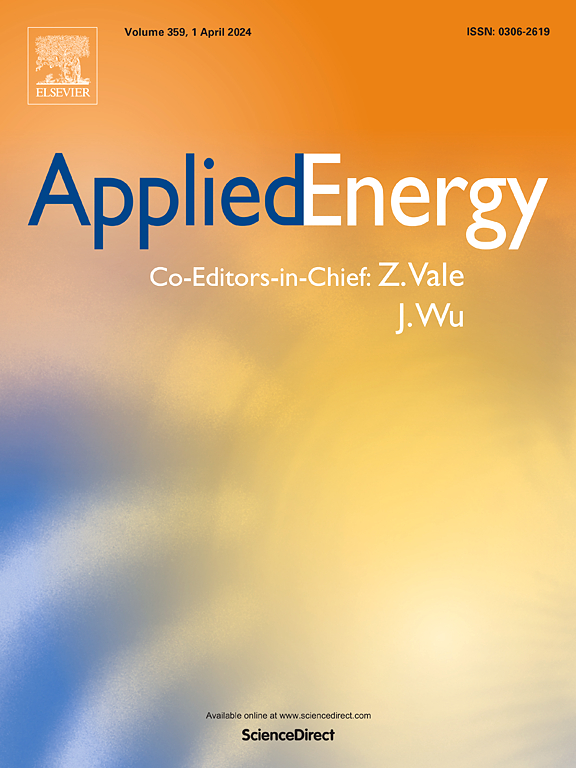Advanced graph-based machine learning reveals cross-sector drivers of decarbonization in the United States and China
IF 10.1
1区 工程技术
Q1 ENERGY & FUELS
引用次数: 0
Abstract
The United States and China, as the world's two largest carbon emitters, play a critical role in global efforts to mitigate climate change. However, there is a notable lack of comprehensive comparative analyses evaluating their decarbonization trajectories across multiple sectors. This study aims to fill this gap by employing advanced machine learning models to analyze and compare how renewable energy adoption, technological advancements, and policy measures have influenced carbon emissions and energy consumption in the United States and China. The nexus of technological innovation and strategic policy implementation is explored to generate actionable insights into the key drivers of power sector decarbonization and the broader clean energy transition. Utilizing a comprehensive dataset covering the power, industry, buildings, and transport sectors, our analysis leverages the strengths of GCN and GAT in capturing complex interdependencies within the data. The findings highlight the pivotal role of innovation and targeted policies in driving significant CO₂ emissions reductions, offering deeper insights into pathways toward net-zero emissions for both countries. This research contributes to the literature by integrating graph-based machine learning approaches to provide a nuanced understanding of feature interactions, which traditional models may overlook, and offers practical recommendations for policymakers and stakeholders engaged in global climate change mitigation efforts. These insights directly inform Article 4 of the Paris Agreement and subsequent Glasgow and Sharm el-Sheikh commitments by quantifying how technology–policy interactions accelerate national emission targets. The graph-based approach also highlights renewable-energy patents and battery breakthroughs as decisive levers, pointing policymakers toward innovation-led decarbonization pathways.

先进的基于图形的机器学习揭示了美国和中国脱碳的跨部门驱动因素
作为世界上最大的两个碳排放国,美国和中国在减缓气候变化的全球努力中发挥着关键作用。然而,明显缺乏评估其跨多个部门脱碳轨迹的综合比较分析。本研究旨在通过采用先进的机器学习模型来分析和比较可再生能源的采用、技术进步和政策措施如何影响美国和中国的碳排放和能源消耗,从而填补这一空白。本文探讨了技术创新和战略政策实施之间的关系,以对电力部门脱碳和更广泛的清洁能源转型的关键驱动因素产生可操作的见解。利用涵盖电力、工业、建筑和运输部门的综合数据集,我们的分析利用了GCN和GAT在捕获数据中复杂的相互依赖关系方面的优势。研究结果强调了创新和有针对性的政策在推动大幅减少二氧化碳排放方面的关键作用,为两国实现净零排放的途径提供了更深入的见解。本研究通过整合基于图的机器学习方法对传统模型可能忽略的特征相互作用提供细致入微的理解,并为参与全球气候变化减缓工作的政策制定者和利益相关者提供实用建议,从而为文献做出了贡献。这些见解通过量化技术-政策互动如何加速国家排放目标,直接影响了《巴黎协定》第四条以及随后的格拉斯哥和沙姆沙伊赫承诺。基于图表的方法还强调可再生能源专利和电池突破是决定性的杠杆,为政策制定者指明了以创新为主导的脱碳之路。
本文章由计算机程序翻译,如有差异,请以英文原文为准。
求助全文
约1分钟内获得全文
求助全文
来源期刊

Applied Energy
工程技术-工程:化工
CiteScore
21.20
自引率
10.70%
发文量
1830
审稿时长
41 days
期刊介绍:
Applied Energy serves as a platform for sharing innovations, research, development, and demonstrations in energy conversion, conservation, and sustainable energy systems. The journal covers topics such as optimal energy resource use, environmental pollutant mitigation, and energy process analysis. It welcomes original papers, review articles, technical notes, and letters to the editor. Authors are encouraged to submit manuscripts that bridge the gap between research, development, and implementation. The journal addresses a wide spectrum of topics, including fossil and renewable energy technologies, energy economics, and environmental impacts. Applied Energy also explores modeling and forecasting, conservation strategies, and the social and economic implications of energy policies, including climate change mitigation. It is complemented by the open-access journal Advances in Applied Energy.
 求助内容:
求助内容: 应助结果提醒方式:
应助结果提醒方式:


